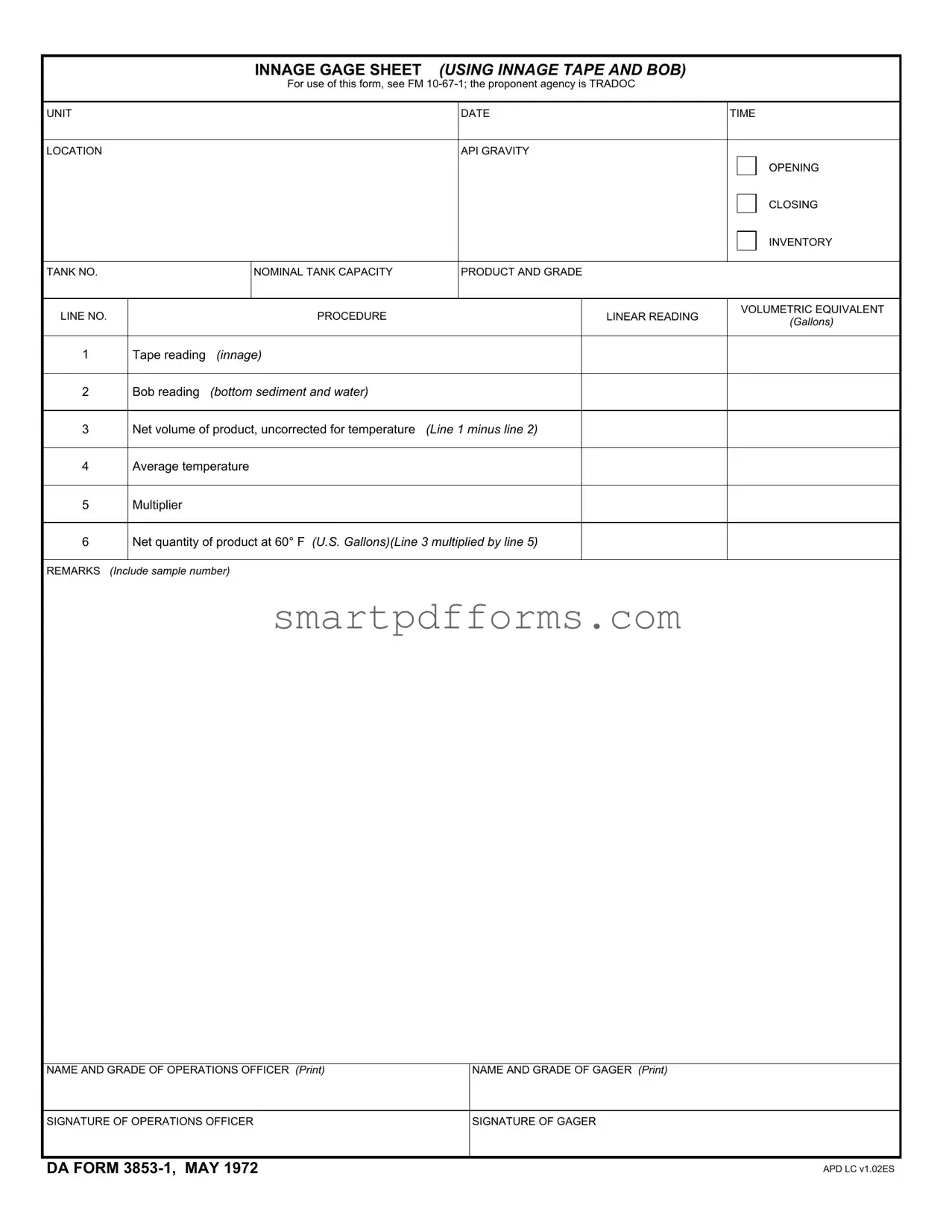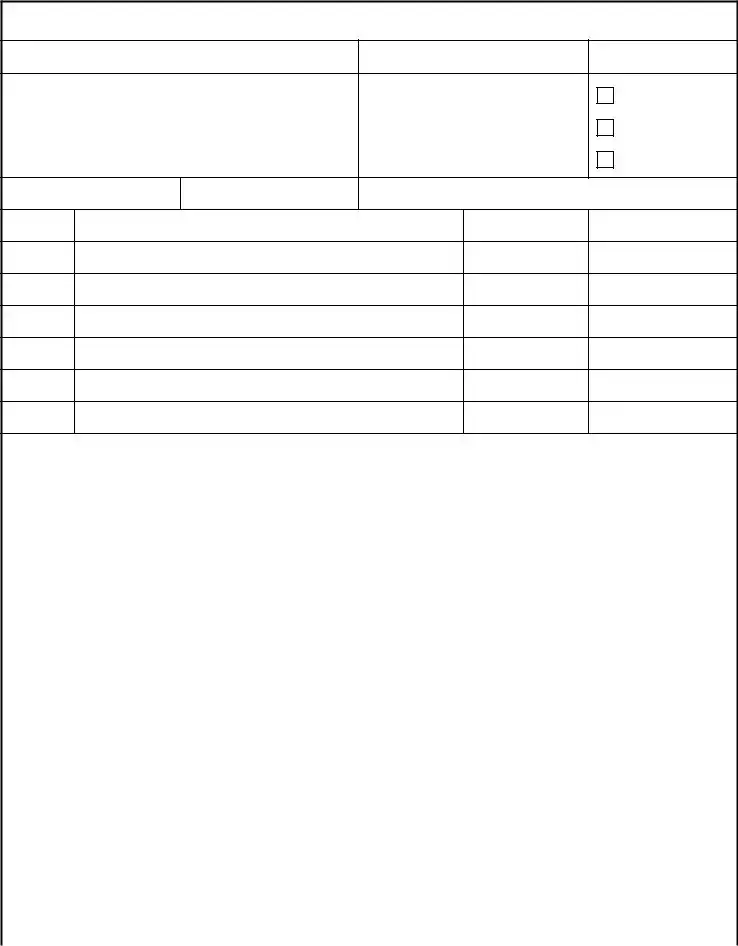Blank 3853 1 PDF Template
The DA Form 3853-1, known as the Innage Gage Sheet, is employed in the process of measuring the volume inside a storage tank using innage tape and bob. This form is critical for accurately reporting the inventory of liquid products, reconciling opening and closing volumes, and documenting key data such as temperature, API gravity, and net quantity of product adjusted for temperature. Ensuring the form is filled out meticulously is essential for maintaining operational accuracy and compliance.
To move forward with accurate inventory management and reporting, fill out the DA Form 3853-1 by clicking the button below.
Make This Document Now

